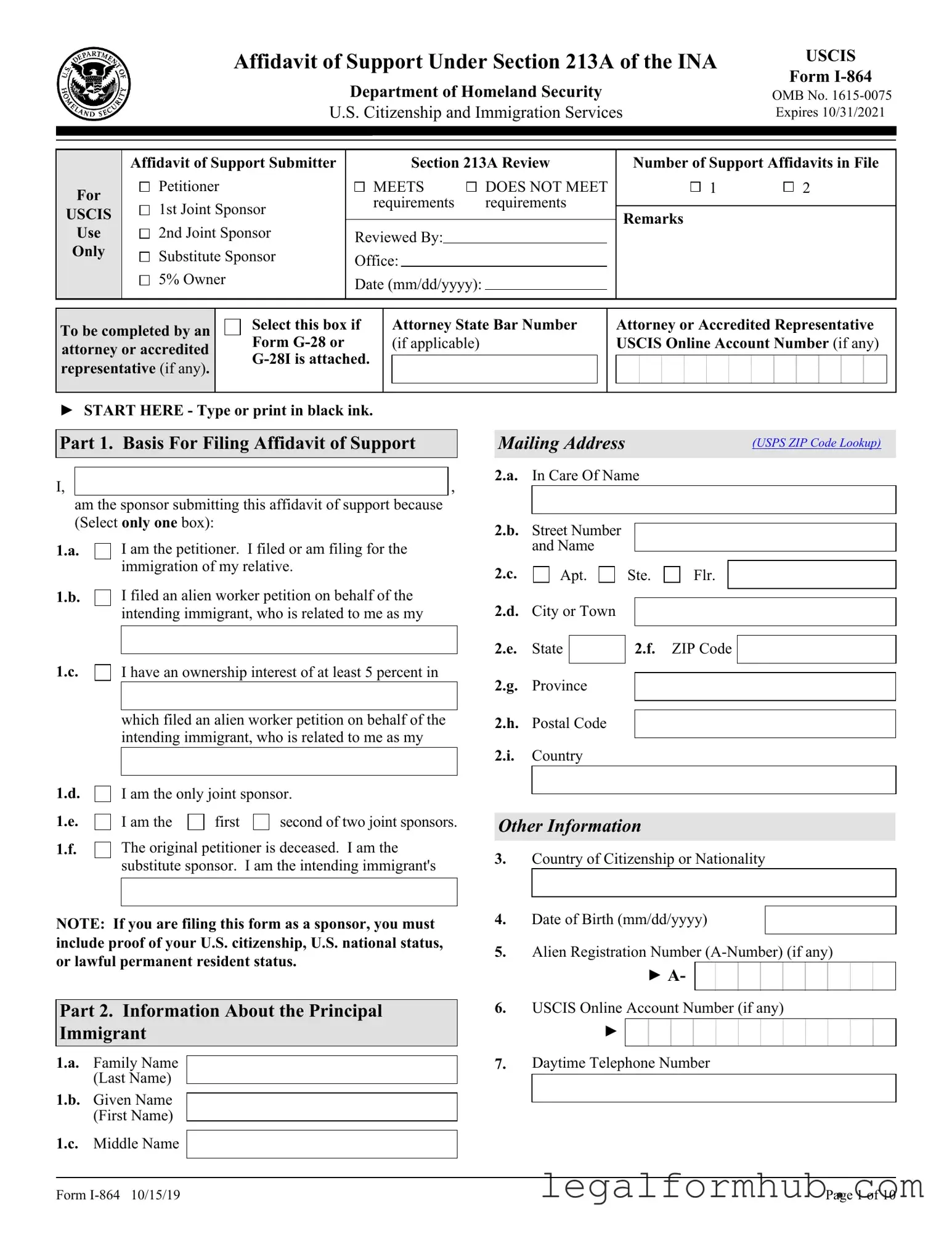The USCIS I-864 form, also known as the Affidavit of Support, is a critical document for those sponsoring immigrants. It ensures that the immigrant will not become a public charge. Similar to the I-864, the I-134 form, or Affidavit of Support, is used for non-immigrant visa applicants. This form demonstrates that the applicant has sufficient financial support during their stay in the U.S. While the I-864 is required for immigrants seeking permanent residency, the I-134 is often used for temporary visitors, making its purpose slightly different but related in terms of financial assurance.
The I-864A form serves as a contract between the primary sponsor and a household member. It is used to include additional income from a spouse or other relatives in the household to meet the income requirement. Like the I-864, it aims to provide evidence of financial stability, ensuring that the immigrant will have adequate support. This form emphasizes the importance of combined household income in the sponsorship process.
The I-864EZ form is a simplified version of the I-864, designed for certain sponsors who meet specific criteria. This form is shorter and easier to complete, making it accessible for those who qualify. Both forms serve the same fundamental purpose of providing financial support but cater to different situations based on the sponsor's circumstances.
The I-130 form, or Petition for Alien Relative, is another important document in the immigration process. It establishes a qualifying relationship between the sponsor and the immigrant. While it does not directly address financial support, it lays the groundwork for the I-864, which follows once the relationship is confirmed. The I-130 is essential in the overall sponsorship process, connecting family ties to financial obligations.
The I-751 form, or Petition to Remove Conditions on Residence, is used by conditional residents who wish to obtain permanent residency. While it focuses on the status of the immigrant, it also involves financial considerations. The sponsor must continue to demonstrate financial support to ensure that the immigrant does not become a public charge. Thus, it parallels the I-864 in its aim to ensure the immigrant’s financial stability.
The I-140 form, or Immigrant Petition for Alien Worker, is primarily for employment-based immigration. It requires the employer to demonstrate the ability to pay the offered wage. While it differs in focus, it shares a common theme with the I-864: both forms require proof of financial capability to support the immigrant, whether through family ties or employment opportunities.
The N-400 form, or Application for Naturalization, is used by permanent residents seeking U.S. citizenship. While it does not require a financial affidavit, it does include questions about the applicant's financial history and obligations. This form indirectly relates to the I-864, as the immigrant's financial stability is a factor in the naturalization process, reinforcing the importance of financial responsibility in the immigration journey.
For those interested in safeguarding their organization, a well-prepared comprehensive Release of Liability agreement is essential. This document can help mitigate risks associated with various activities by ensuring that participants acknowledge potential dangers and waive their right to legal claims. Consider utilizing this form to establish clear terms of participation and protect against unforeseen incidents.
The I-485 form, or Application to Register Permanent Residence or Adjust Status, is essential for those seeking to adjust their immigration status. It requires proof of eligibility, including financial support documentation. The I-864 is often submitted alongside the I-485, highlighting the interconnectedness of these forms in ensuring that immigrants can sustain themselves financially once they gain permanent residency.
The DS-260 form, or Immigrant Visa Electronic Application, is used by individuals applying for an immigrant visa outside the U.S. It requires similar financial information to demonstrate that the applicant will not become a public charge. Like the I-864, it emphasizes the importance of financial support in the immigration process, ensuring that immigrants have the means to support themselves upon arrival in the U.S.
